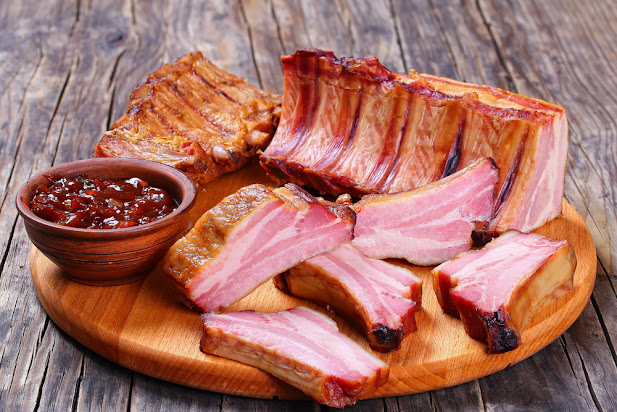- Get link
- X
- Other Apps
To smoke the best cut of beef, follow these steps:
Choose the right cut of beef: Some of the best cuts for smoking are brisket, chuck roast, and beef ribs. These cuts have more fat and connective tissue, which break down and become tender during the slow smoking process.
Prepare the beef: Trim any excess fat from the meat and season it with your favorite dry rub or marinade. Let the meat sit at room temperature for at least 30 minutes before smoking.
Set up the smoker: Preheat your smoker to 225-250°F. Use wood chips or chunks (such as hickory, oak, or mesquite) to create smoke and add flavor to the meat.
Place the beef in the smoker: Place the beef on the smoker rack with the fat side facing up. Make sure there is enough space between the meat and the sides of the smoker to allow smoke to circulate around the meat.
Smoke the beef: Smoke the meat for several hours, depending on the size of the cut. For example, a 4-pound brisket may take 8-10 hours to smoke, while beef ribs may take 4-6 hours. Baste the meat with a mop sauce or spray with apple cider vinegar every hour or so to keep it moist.
Check the internal temperature: Use a meat thermometer to check the internal temperature of the meat. For medium-rare beef, the temperature should be around 130-135°F, while medium to medium-well beef should be around 145-155°F.
Rest the meat: Once the beef reaches the desired internal temperature, remove it from the smoker and let it rest for at least 30 minutes before slicing. This allows the juices to redistribute and results in a more tender and flavorful meat.
Slice and serve: Slice the meat against the grain into thin strips or chunks and serve with your favorite sides, such as baked beans, coleslaw, or cornbread.
Notes:
Smoking beef requires patience and a low and slow cooking approach. Keep the temperature consistent throughout the cooking process to ensure even cooking and tender meat.
Use a meat thermometer to check the internal temperature of the meat to avoid undercooking or overcooking it.
Experiment with different types of wood and seasoning to find your favorite flavor profile.
- Get link
- X
- Other Apps

Comments
Post a Comment